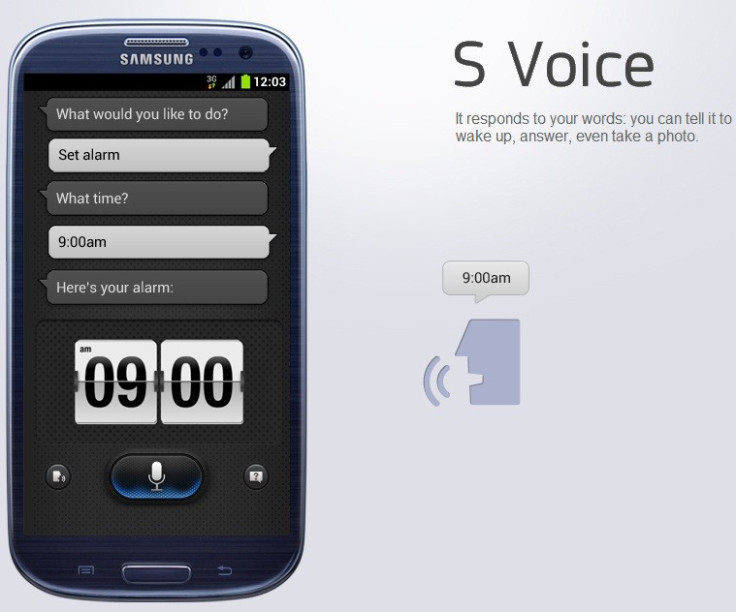Samsung Galaxy S3 Vs Galaxy Nexus LTE: Battle of Two Samsung Titans
Samsung confirms The Galaxy S3 will go on sale with 296 carriers in 145 countries

Samsung Galaxy Nexus, the world's first smartphone to run on the Android 4.0 Ice Cream Sandwich operating system, was announced in October with a global market release in Europe in November. Along with Android 4.0 OS, the smartphone is equipped with the latest technology that includes Near Field Communication, Google Wallet and Face Unlock. The LTE version of the smartphone comes with a few notable tech features that include 4G, powerful battery and more storage capacity.
Samsung's latest in the Galaxy S family otherwise known as Samsung Galaxy S3 has been unveiled. The UK retailers have announced lucrative deals for the Galaxy S3. Recently, Vodafone confirmed the availability of 32GB version of the Galaxy S3. It will go on sale with 296 carriers in 145 countries and the handset will connect 4G speeds in compatible countries.
Take a look at the two Samsung Android phones:
Display
The Galaxy S3 features a bigger screen in the Galaxy S family smartphones with a 4.8in Super AMOLED display. The resolution of the display is 720 x 1280 pixels with 306 pixels per inch (ppi) pixel density. Samsung claims the display will offer a large and vivid viewing experience.
The LTE version of the Galaxy Nexus features a 4.65in Super AMOLED capacitive touchscreen. The resolution of the display is 720 x 1280 pixels with pixel density of 316 ppi.
Dimension
The Galaxy S3 measures 136.6 x 70.6 x 8.6mm in thickness and weighs lighter than the Galaxy Nexus at 133g.
The Galaxy Nexus measures 135.5 x 67.94 x 9.47mm in thickness and weighs approximately 150g which is slightly more than the global version of Galaxy Nexus.
Operating system
The Galaxy Nexus and the Galaxy S3 run on the Android operating system 4.0 Ice Cream Sandwich.
Processor
The Galaxy S3 will be powered by Samsung's 1.4 GHz Exynos 4 quad-core processor which is the company's first quad core application processor. The processor, according to Samsung, carries twice the processing capabilities over its predecessor and consumes 20 per cent less power.
The Galaxy Nexus is powered by TI OMAP 4460 chip with dual-core 1.2GHz processing unit. The Galaxy S3 and the Nexus house 1GB of RAM.
Camera
The Galaxy S3 is packed with a main camera of eight megapixel and a front-facing camera of 1.9 megapixel. The primary camera features auto-focus, LED flash, zero shutter lag, touch-focus, geo-tagging, face and smile detection and image stabilisation. The camera can record video in 1080p at 30 frames per second (fps) whereas the front-facing camera can capture video in 720p at 30 fps. The front camera is equipped with a feature called Smart stay with the help of which the smartphone recognises when the user is looking at the phone and locks when the user is looking away
The Galaxy Nexus sports a five megapixel main camera with auto-focus, LED flash, geo-tagging, panorama and other effects. The camera can record video in 1080p at 30 fps. The handset also features a 1.3 megapixel front-facing camera which can record video in 720p at 30 fps.
Connectivity
The Galaxy S3 offers Wi-Fi /b/g/n, Wi-Fi HT40, Near Field Communication (NFC) and Bluetooth version 4.0. It supports data speed up to HSDPA 21Mbps and HSUPA 5.76 Mbps. Samsung said that the smartphone can connect 4G network speed in compatible countries.
The Galaxy Nexus offers Wi-Fi 802.11 a/b/g/n, DLNA, dual-band, Wi-Fi hotspot and Bluetooth version 3.0. The smartphone also supports 4G network and NFC.
Storage
The Galaxy S3 offers storage capacity of 16GB, 32GB and the 64GB version will be available soon. The Galaxy S3 supports microSD card.
The internal storage capacity of Galaxy Nexus is 32GB whereas the global version of the Nexus could only offer 16GB storage. But the smartphone does not support microSD card.
Battery
The Galaxy S3 is powered by a 2100mAh battery which is expected to deliver extended battery life.
The Galaxy Nexus is powered by Li-ion 1850mAh battery which is more powerful than the battery of the global version of Galaxy Nexus.
© Copyright IBTimes 2024. All rights reserved.






